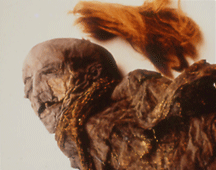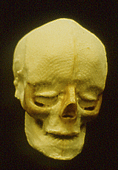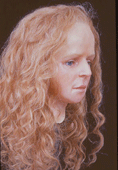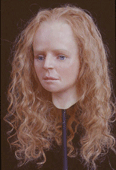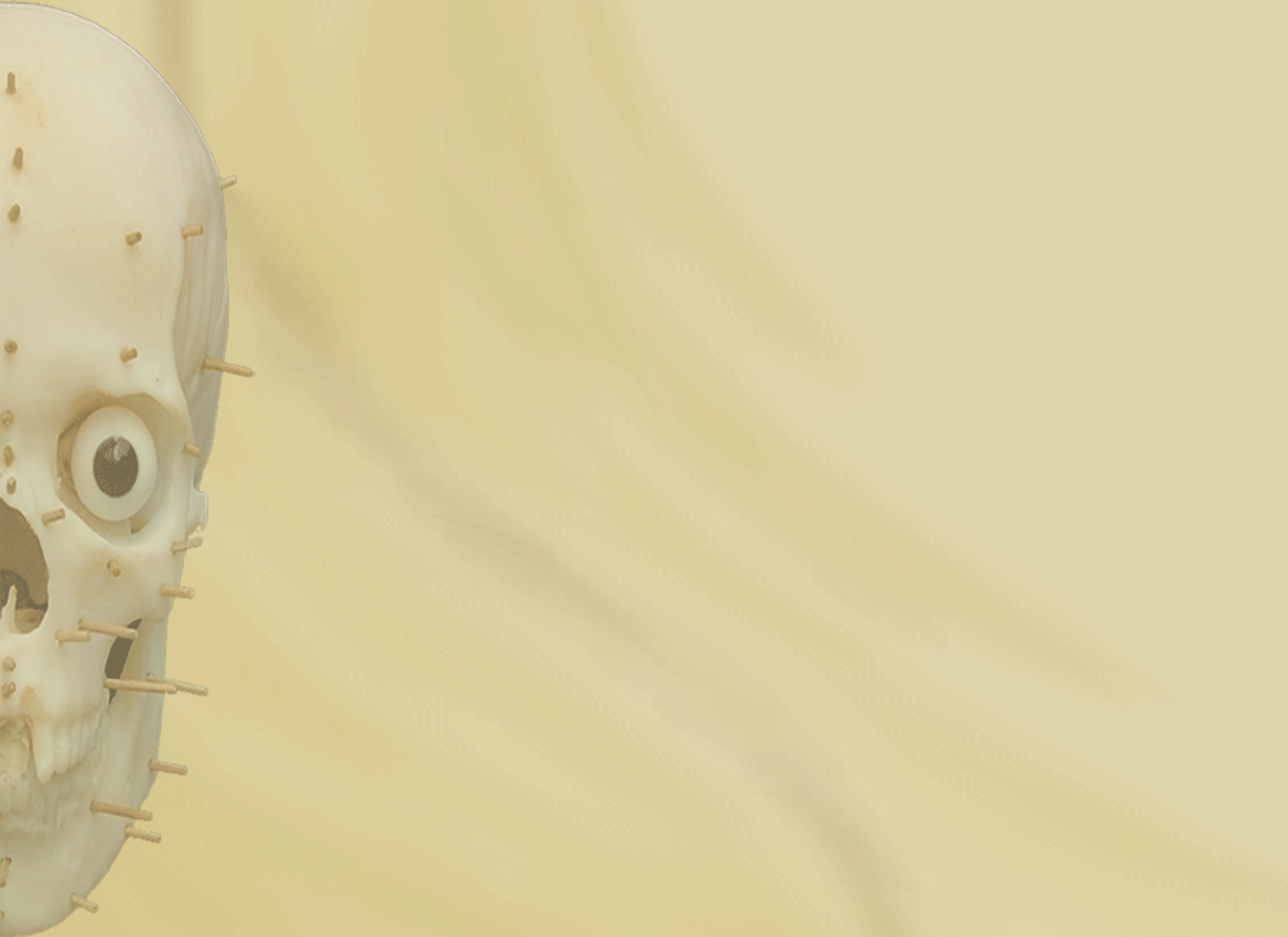Unlike the earlier reconstruction of Lindow man, this body had been found around one hundred years before the reconstruction was made, and so had "dried out" and was in addition damaged, making it more difficult to produce a skull to work on. The body was CT-scanned, and these were sent to Dr Robin Richards at University College Hospital, London, who used a computer to move the broken pieces of the skull around until it was complete. This was then used to produce a styrene replica. At first it was too small - no account had been taken of the shrinkage that the body had suffered. But a second replica was made, some fifteen percent larger to account for this.
For this reconstruction, as with many ancient skulls, the nasal bone was lost, and so the final result shows a nose which is consistent with the other features of the face, but not necessarily accurate. The face that emerged was a rather unusual one, with small features, wide-set eyes and a very high, straight forehead.
